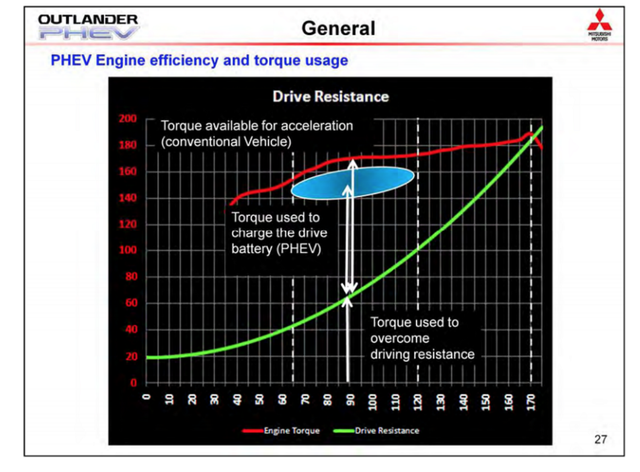greendwarf said:
anko said:
greendwarf said:
In my experience once you are in parallel mode at that sort of speed, pressing Charge has little effect, (I am usually on Cruise Control) as all the power is going to the wheels with nothing left over for the battery. It will only be in an "overrun" situation (i.e. when going downhill) that you get some charging. So yes, the battery will get charged during high speed driving but very slowly.

You realise he wrote km/h, not MPH? If what you said was true, you would not be able to maintain such speed in the long run. At 110 km/h there is plenty of surplus power to recharge the battery and allow the ICE to be switched off about 1/4 of the time. It is quite different when climbing or towing ;-)
Yes and 110 km/h is 68 mph i.e. just below the UK legal limit, which is what I cruise at on a motorway. I can assure you that Charge has the effect I described in my car - I did say "in my experience".
Let me take it one step back: you said "once you are in parallel mode, pressing Charge has little effect". Obviously, this is true because, at a steady 110 km/h, there is no difference between a car running in parallel mode and a car running in charge mode. In parallel mode the car will already be recharging the battery 'as fast as it seems fit' and pressing Charge will not increase the charge current. So indeed, pressing the Charge button will make no difference (not even the tiniest one).
This recharging allows the car to, every now and then, drop out of parallel mode and run in EV mode for a while (the 1/4 I was referring to) before starting the ICE again. Pressing Charge will prevent this 'dropping out of parallel mode' from happening, so there appears to be a difference between Parallel mode and Charge mode after all. But technically, when this difference manifests itself we are no longer comparing Parallel mode to Charge mode


But you also said (and this triggered my response): at 110 km/h all power available from the ICE is going to the wheels. For sure this is not true / cannot be true. First of all, look at this well known picture:
It show how much reserve the ICE has at various speeds. At 110 km/h, there is still a quite significant reserve. Jaapv seems even able to gain SOC at 140 km/h, and the picture appears to back up his finding. Also, it would mean the hysteresis cycle would be broken at 110 km/h. And IMHO we know this cycle goes on up to the speed at which WV mode is still possible, at least > 110 km/h.
To be fair, the ICE will no go above approx. 75% load for charging purposes (for propelling purposes, it will). But even when operating at 'just' 75% there is still surplus power available. Even at speeds above 110 km/h. So yes, if you ask me, when your car needs all available engine power at a steady 110 km/h on a flat road, you need to have it checked out. But honestly, I think you have have been comparing Parallel mode to Charge mode and drawn some wrong conclusions.
greendwarf said:
... I don't understand why you should say that my description wouldn't allow such speed in the long run? - unless you run out of petrol :lol:
If all the available power was going to the wheels some battery power would be needed to eliminate electromagnetic drag in the E-motors and the generator and this will slowly drain the battery. I guess about three to four hours of driving would take car of a full charge. It will not show on the diagrams on the dash, but it does happen. Eventually, your SOC will drop so low that the car would have to drop out of parallel mode to resolve the issue. No way that this will happen when driving at 110 km/h without any towing or climbing going on.


